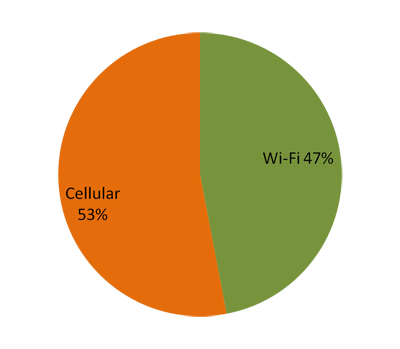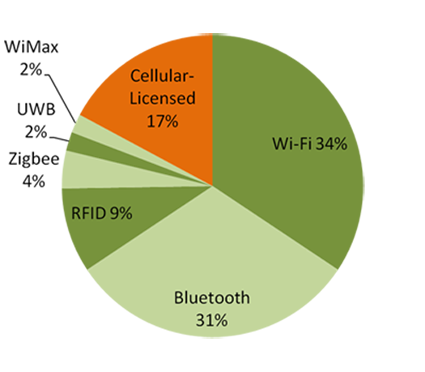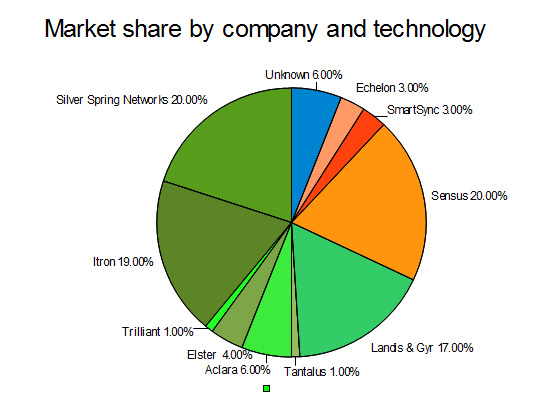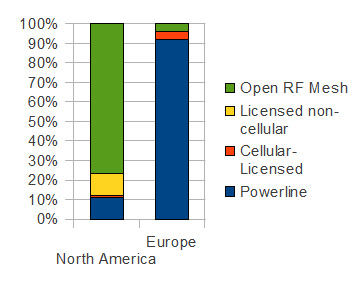Open Wireless vs. Licensed Spectrum: Evidence from Market Adoption
Abstract
The paper reviews evidence from eight wireless markets: mobile
broadband; wireless healthcare; smart grid communications; inventory
management; access control; mobile payments; fleet management; and
secondary markets in spectrum. I find that markets are adopting
unlicensed wireless strategies in mission-critical applications, in many cases more so than they are building on licensed strategies. If the
1990s saw what was called "the Negroponte Switch" of video from air to
wire, and telephony from wire to air, the present and near future are
seeing an even more fundamental switch. Where a decade ago most of our
wireless capacity was delivered over exclusive control approaches-both
command and control and auctioned exclusivity--complemented by
special-purpose shared spectrum use, today we are moving to a wireless
infrastructure whose core relies on shared, open wireless approaches,
complemented by exclusive control approaches for special,
latency-intolerant, high-speed mobile applications. The scope of the
latter will contract further if regulation catches up to technological
reality, and opens up more bands to open wireless innovation, with
greater operational flexibility and an emphasis on interoperability
This final version of the paper uses more updated market data than the 2011 working paper, adds case study analysis of failures or anemic cases of open wireless allocations, the U-PCS, WMTS, ITS, and 3.65GHz bands
(suggesting valuable lessons for future design of open wireless
allocations), and adds an extensive literature review and rebuttal to
some of the major academic critiques of open wireless approaches.
Green = open wireless; Orange = licensed
| iPhone | iPad |
 |  |
Smart Grid Communications U.S. Market Shares by Firm
|
| Market share source: Pike Research Smart Grid Deployment Tracker, 1Q12 Technology characterization: Author * Itron purchased SmartSync in Q12012 and now offers both types; I characterize each here based on its model as of Q12012. |
AMI node shipments, Q1 2012
|
| Source: Pike Research Smart Grid Deployment Tracker, 1Q12 |
Market share of wireless in healthcare
 |
| Source: Kalorama Information Wireless Technologies in Healthcare, September 2011 |
Eighty percent of wireless healthcare; seventy percent of smart grid
communications; and forty to ninety percent of mobile broadband data to
smartphones and tablets use unlicensed strategies. Unlicensed
technologies are entirely dominant in inventory management and access
control. For mobile payments, current major applications use unlicensed, and early implementations of mobile phone payments suggest there is no
particular benefit to licensed strategies in this space. Fleet
management is the one area where licensed technologies are predominant.
However, UPS, owner of the second largest commercial fleet in the U.S.,
has implemented its fleet management system purely with unlicensed
wireless, suggesting that even here unlicensed may develop attractive
alternatives. By contrast to these dynamic markets, secondary markets
in licensed spectrum have been anemic.
Policy Implications
The evidence from the most dynamic and critical markets in wireless
communications suggests that unlicensed wireless technologies have been
underrated in the regulatory calculus. Future spectrum policy debates,
in particular those surrounding TV band auctions and reallocation of
federal spectrum, should secure an adequate development path for
unlicensed technologies, devices, and services at least as much as they
emphasize flexibly-licensed exclusive rights.
The most immediate policy implications are:
- The economic value of bands dedicated to open wireless capacity is widely understated in present studies; the approach developed and implemented here, of analyzing verticals that use wireless capacity and measuring capacity share suggests that open wireless strategies have a much higher value across diverse applications than has been generally captured by existing studies.
- To capture this tremendous economic value, as the FCC implements its incentive auctions authority it should use every flexibility open to it to expand the availability of as many, as contiguous, and as little-burdened as technically feasible bands for open wireless operations. Current plans to use guard bands, microphone bands, and channel 37 are steps in the right direction, but the Commission should generally aim to optimize on three, not two, dimensions, adding the opening of new open wireless allocations to its calculations in how to optimize the TV band auctions.
- The NTIA should update its studies of bands available for sharing with civilian use to account specifically for how much, and how soon, could be turned over to open wireless devices, rather than how much, and how soon, can be cleared for exclusive use. Ultimate determinations should be made based on the comparison of the costs and benefits of these competing alternatives for reallocating federal spectrum to sharing with civilian uses.
- One of the most promising dramatic increases in wireless capacity in the short term would be to facilitate opening up of every single (or as close to it) WiFi access point to use and sharing by any WiFi enabled device. This will require some work in coordinating standards, sign-on, sharing of the wired capacity, and security, but the near-mobile-nomadic capacity already deployed in the nation's existing wired gateway infrastructure, in homes, small businesses, and almost every other building in America, is a vast untapped reserve of "spectrum" that must be tapped, and can be tapped by coordination, with almost no major technical advances and little by way of new regulation.
- Open wireless allocations should generally be designed to be as open and agnostic as feasible among technologies and applications, with minimal rules, minimal special-purpose designation, and a focus on open standards and interoperability. In intelligent transportation systems, for example, we have seen substantially more innovation and activity using the ISM bands than using the special-purpose, Intellegent Transportation Systems band in 5.9GHz. In medicine, WiFi and bluetooth have been more productive than the Wireless Medical Telemetry Service (WMTS) bands, although both are open wireless approaches, and both dominate the licensed cellular M2M approach in healthcare. WMTS has played an important role in remote patient monitoring, but most wireless healthcare applications depend on general purpose bands.
- The focus on auctions and the revenue they produce severely
distort the political economy of wireless policy. The capacity gains
that innovation in WiFi has made over some of these bands has been
roughly commensurate with Moore's Law--a doubling of capacity every
18-22 months. Efforts to raise revenue, whether through auction or
through short term leasing, that hamper this innovation dynamic are
penny wise, pound foolish for a society and economy that increasingly
requires wireless capacity for growth and secure, robust communications
systems.
Feedback can be sent to Yochai Benkler <yochai_benkler@harvard.edu>


